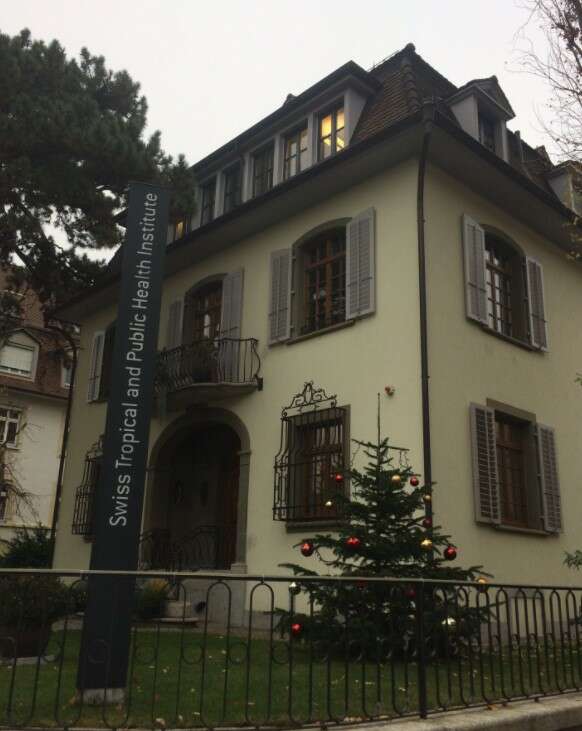
By Professor Russell Stothard
Unlike the UK where there are two schools dedicated to tropical medicine, there is only one in Switzerland and located in Basel. The Swiss Tropical and Public Health Institute (Swiss TPH) is affiliated with the local university and has over 800 people from more than 70 nations working on infectious and non-communicable diseases. Internationally, the Swiss TPH has a large global foot print which has grown since its foundation in 1943.
Like the Liverpool and London Schools, the Swiss TPH has a fascinating history. Its first director - Rudolph Geigy, is widely recognised as a true pioneer of the control of vector-borne diseases. Today the institute still oversees two field stations in Côte d’Ivoire and Tanzania, originally founded as the Centre Suisse de Recherches Scientifiques (CSRS) in Adiopodoumé and the Swiss Tropical Institute Field Laboratory (STIFL) in Ifakara. The institute actively supports many interventions globally that assuage disease in low and middle-income countries.
To highlight the best of current research and control activities, each year the Swiss TPH organises a winter symposium on a topic of international interest. This year the 2-day meeting’s theme was dedicated to medical helminthology; a lot of ground was covered within a packed programme. Much of it featured implementation research that fostered interdisciplinary studies and as such, I was honoured to represent COUNTDOWN. I highlighted our research across those neglected tropical diseases amenable to preventive chemotherapy and during my keynote presentation. I discussed some of our most recent publications on gender, blogs and presentations on soil-transmitted helminthiasis and schistosomiasis as well as the growing importance of science communications in general.
With today’s changing lifestyles and needs to process information, it is critical to demonstrate how modern media tools can showcase and raise awareness of research uptake. This can be viewed as exploring a combination of new distribution channels alongside older ones that embed implementation research into adaptive health system programming and policy change. For example, I was able highlight our recent paper on WASH which was particularly opportune for our co-author Yael Vellerman was in attendance. I chaired the session where Yael presented her recent activities in WHO, whilst currently seconded from Water Aid, she discussed issues pertaining to scale-up of WASH-related interventions. I illustrated our collaborative steps, starting with platform discussions at COR-NTD, in revealing research and policy gaps. This gave better context to the need for cross-sector collaboration in development of appropriate indicators for surveillance of health and environmental change. More generally, an overview report of this meeting is featured within the Swiss TPH website likely with more detailed outputs to follow as several papers presented will later result in peer-reviewed manuscripts.
While there were many powerful examples of cross-talk and complementation of methods in implementation research, I want to highlight a few. Exciting new methods to measure children’s physical fitness and physio-social needs before and after de-worming were presented by Professor Markus Gerber; better clinical management of liver cancers alongside eco-health approaches in the environment to curtail transmission of opisthorchiasis were excellently illustrated by Professor Banchop Sripa.
From my perspective, I found this meeting a very fertile field to sow the seeds of research uptake and future collaboration which is needed to advance towards WHO 2020 targets and 2030 Sustainable Development Goals.
